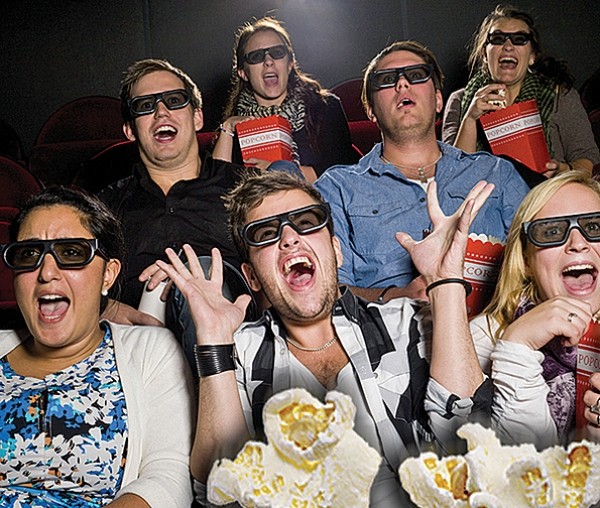
It started as a simple Twitter comment by movie-awards blogger Sasha Stone of AwardsDaily.com—or at least she probably thought it was simple. “Most critics see films with a poker-faced crowd,” Stone commented. “I want to see [The Dark Knight Rises] with a REAL crowd.”
I could have let it go. But I didn’t. Most likely it was because I’d already had my hackles up for weeks thanks to filmmaker Kevin Smith’s ongoing crusade against the whole idea of film criticism, only most recently involving a nine-minute tirade at the San Diego Comic-Con. Central to Smith’s disdain were the circumstances under which critics saw movies—specifically, that they didn’t have to buy a ticket, and they didn’t watch in an audience full of “real movie-goers.” Smith even built a new Webcast show around the idea of having such real movie-goers offer their opinions.
So, since I didn’t have Mr. Smith immediately at hand to kick back at, I took on Ms. Stone. And thereupon was built a spirited (but never hostile) debate over how much it matters not just what you see in a movie, but with whom you are seeing it.
A bit of a reality check, first of all. Of the 175-ish theatrically released features I see in a typical year, I’d estimate (very unscientifically) that I see around 40 percent on screener DVDs, 20 percent in press-only theater screenings and the remaining 40 percent at filled-theater, pre-release promotional screenings. Studios are often particularly conscientious about the types of films they want the press to see with a general audience: comedies, action blockbusters, anything where it’s assumed that the response of a lively, engaged crowd might enhance the experience.
Because, however much it might pain me to agree with Kevin Smith, he has a certain point. The circumstances in which we experience a movie do make a difference in how we respond to it. Those who pay for a ticket may be more psychologically invested in believing that they got their money’s worth, or having confirmation bias come into play; big, responsive crowds do change the way we feel about what we’re watching. I’d been clear about the latter phenomenon in particular ever since I was a teenager working at a movie theater in the mid-1980s. I’d slip into auditoriums during key moments in certain movies—Daniel’s “crane kick” at the end of the original Karate Kid, for example—just to get a contact high off the audience’s eruption of emotion. That was the movie magic we all fell in love with originally—not sitting somberly with artsy dramas alone at home, but sharing a collective laugh, scream or cheer in the dark with 200 strangers.
So I didn’t argue with Ms. Stone that there wasn’t a difference, whether great or small, between watching The Dark Knight Rises with a dozen fellow critics and watching with a theater full of paying partisans. What I argued was whether or not one way of watching it, in my role as a film writer, was inherently better.
It’s probably fair to say that if you asked any filmmaker, they’d prefer that you watched their movies in a sold-out theater. But the reality is that hardly any of us do. While some people will rally 20 friends to turn a movie into an opening-night party, far more will see it later, at a matinee or in a sparsely attended showing. Still more will watch at home on their TV screens or, increasingly, on a computer. And perhaps even more will catch it while channel-surfing past TNT or FX on a weekend night a few years after it opens. The primacy of the opening weekend may be the focus of studio marketing, but for the average movie viewer, that’s no more “reality” than sitting in a room with a dozen film critics.
In a weird way, I’m on the side of all those hypothetical filmmakers, including Kevin Smith. I’d love it if everyone—including critics—saw every movie on a big screen, in perfect exhibition conditions, with a crowd of ready-to-be-transported strangers. But chasing that single experience as the only legitimate context for a film review is a fool’s game, since by writing only about a single type of audience, you wind up writing for only a single type of audience. And if you only give a film a better evaluation because you saw it in a packed house, what are you contributing to those who’ll see it three weeks later with 10 people, or three months later on a plane?
The best a film writer can do is engage with what’s on the screen and provide a framework for understanding it, no matter where or how a reader will end up watching it. In the final analysis, there’s no other way to keep it real.